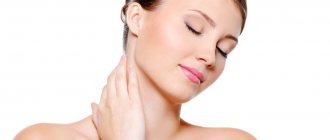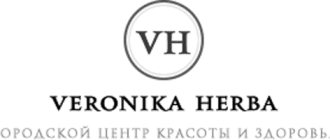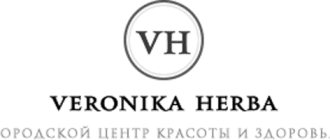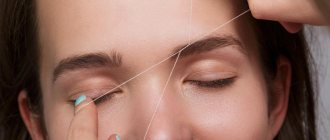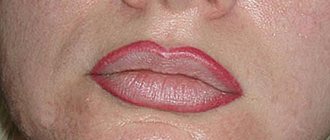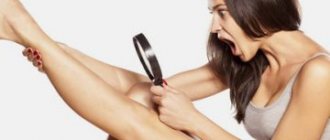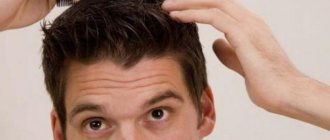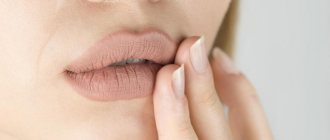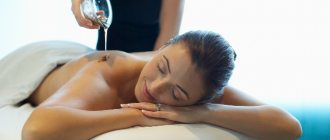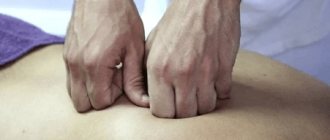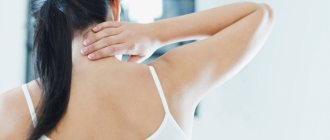Headache, chronic fatigue, swelling are the consequences of an inactive lifestyle and sedentary work, which creates tension in the neck. Residents of a metropolis and people living in remote areas do not always have the opportunity to contact an experienced massage therapist. The solution is to give yourself a massage of the cervical-collar area at home, which only requires a partner and certain knowledge.
Technique for performing massage of the cervical-collar area
Massage has been practiced for several thousand years, during which it was possible to bring the technique of influencing the neck and shoulders to the ideal. Modern massage therapists do not need to go through a series of trials and errors - it is enough to follow the correct technique for performing massage of the cervical-collar area in order to bring only maximum benefit to patients.
PREPARATION FOR MASSAGE
The absence of discomfort during the massage is ensured by preliminary removal of things and clothing. First of all, chains and earrings that are easy for the massage therapist to get caught on are removed from the body. If possible, take a warm shower before the session to speed up muscle relaxation.
Accommodation options:
- Sitting. The patient sits on a chair or hard bed and leans his hands on a table provided.
- Lying down. A person lies down on a bed or a special massage table equipped with a slot for the face in its lower part.
ShVZ massage is also recommended after removing contact lenses and glasses. The minimum time for eating before the start of the session is 1.5 hours.
The massage should be carried out in a room where there are no drafts, but there is a constant flow of clean air.
Stage 1: muscle preparation
Muscle stimulation never begins with rough manipulations—light strokes help prepare the body for more intense and profound healing effects.
Stimulation of the SVZ area is performed along the main massage lines.
The surface contact of the inner part of the palms with the skin begins from the middle of the back and ends with the impact on the shoulders. Alternately, the palms move away from the spinal column, reaching the edge of the right shoulder blade. Then the massage therapist moves to the other shoulder and repeats similar stimulation.
It is recommended to start the first sessions with longitudinal and transverse strokes, and then move on to techniques that have a more complex trajectory of movement.
The number of strokes is from 8 to 10 times on each side. Stroking is given for at least 1 minute, especially if the patient is only undergoing the first session. After a few days, the patient’s body becomes more prepared for the therapeutic load, so the neck area massage technique can be supplemented with the “figure eight”. Execution pattern: the hand describes a trajectory in the form of an infinity sign, which extends to 2 shoulders.
A gradual increase in the load on the muscles is carried out by systematically speeding up the manipulations performed.
Stage 2: warming up the muscles
- Longitudinal rubbing is a rhythmic but gentle movement that enhances local blood microcirculation. The contact between the skin and the hands changes: now only the fingertips are involved in contact. Along an upward, straight path, they rise to the neck, each time moving away from the spine. Then the massage therapist changes the position of his hands, repeating the movement, but with the edges of his palm. Both techniques are performed within 10–20 seconds
- Longitudinal rubbing is a rhythmic but gentle movement that enhances local blood microcirculation. The contact between the skin and the hands changes: now only the fingertips are involved in contact. Along an upward, straight path, they rise to the neck, each time moving away from the spine. Then the massage therapist changes the position of his hands, repeating the movement, but with the edges of his palm. Both techniques are performed within 10–20 seconds
- Longitudinal rubbing is a rhythmic but gentle movement that enhances local blood microcirculation. The contact between the skin and the hands changes: now only the fingertips are involved in contact. Along an upward, straight path, they rise to the neck, each time moving away from the spine. Then the massage therapist changes the position of his hands, repeating the movement, but with the edges of his palm. Both techniques are performed within 10–20 seconds
Stage 3: active massage SHVZ
All movements during kneading are carried out from head to shoulders, that is, from top to bottom. The only exception is the “drilling” technique. By studying the features of performing stage 3, novice massage therapists who are interested in how to properly massage a patient’s collar area will learn that the kneading procedure is the most labor-intensive. It includes 3 consecutive actions.
- capture,
- lifting,
- kneading.
Spiral kneading is divided into 3 types, which are identical in technique (circular movements are combined with gripping skin and muscle tissue).
This type of kneading varies depending on the location of impact.
- trapezius muscles;
- supraspinatus fossa;
- paravertebral muscles.
Paravertebral muscles.
These muscles are located along the entire spinal column on both sides of the spinous processes and are often visible visually.
The first two elements are performed by the method of repeated ascension and descent of the fingertips, first along the trapezius muscle bundles, and then in the direction of the paravertebral muscle fibers. The supraspinatus fossa is massaged differently: circular rotation is carried out in one place.
After stimulation of this point, chopping is performed.
Softness and caution of the impact is the main scheme for performing a massage of the CVZ when working with this zone. The processing time for each phase is the same - from 30 to 60 seconds.
Stage 4: completion of the massage of the cervical-collar area
Finger rain is a relaxing and very pleasant procedure that simulates small drops hitting the skin. The masseur very quickly runs his fingers along the back, reminiscent of the process of typing using a keyboard. The execution time is a 10 second period.
The strokes that were performed at stage 1 are repeated to complete the CVZ massage technique in order to have a general relaxing effect. Light contact of the hands with the skin of the body helps the muscles return to their usual state, which does not interfere with everyday activities.
The duration of a therapeutic massage of the neck and collar at home does not exceed 15–20 minutes, except in cases where painful trigger zones are diagnosed in the body. Painful areas are formed due to prolonged overstrain of individual muscle groups, while manual pressure can relieve this spasm.
The massage technique for children, infants and the elderly is performed according to the same scheme, but with less intensity.
CONCLUSIONS
Strict adherence to the massage regimen is a guarantee of rapid improvement in the patient’s condition. You can study the techniques of performing a massage of the cervical-collar area in more detail on a video in which an experienced massage therapist carries out the correct treatment procedure. Find out quickly and easily how professionals restore health. If you master the lessons of massage of the cervical-collar area and carry out the treatment at least 2 times a week, you can quickly achieve noticeable improvements. Increased blood circulation, increased performance, increased brain activity - pleasant results that can be detected after 2-3 sessions.
Classic massage movements
Neck massage is aimed at relaxing the muscles of the shoulder girdle. At the same time, normal blood circulation is restored, headaches and muscle pain go away, and skin tone returns.
Basic Techniques
Types of basic technique
Stroking
1. Planar: a) superficial b) deep
2. Enveloping: a) continuous b) discontinuous
3. Comb-like.
4. Pincer-shaped.
Rubbing 1. Straight-line. 2. Circular. 3. Sawing 4. Hatching
Kneading 1. Continuous. 2. Intermittent. 3. Transverse. 4. Longitudinal. 5. Pincer-shaped. 6. By pressing. 7. Stretching.
Vibration
1. Continuous. 2. Intermittent. 3. Concussion with a separate finger. 4. Puncturing.
Massagers used for massage of the cervical-collar area
Ease of use, mobility and affordable price of massagers are the main advantages that arouse genuine interest among patients who cannot or do not want to visit a massage room. Understanding consumer preferences, medical equipment manufacturers are actively saturating the market with compact devices for muscle stimulation. However, do massagers for the cervical-collar area have any effect and can they replace the impact that is performed by the hands of a specialist?
TYPES OF MASSAGERS FOR INFLUENCE ON SHVZ
Massaging devices differ in design, but their use is always used to achieve two main goals - increasing blood flow and lymph outflow. Depending on the cost of the massager, the model can be equipped with several types of influence (for example, mechanical with infrared).
Types of ShVZ massagers:
- Collar pad.
Ergonomic devices are placed on the upper back to provide a kneading effect using rollers that automatically roll under the fabric. - "Pillow".
A device that is placed under the head is used to stimulate the muscles of the neck and partly the back. The weak vibration arising from the moving heads helps relieve attacks of cervical osteochondrosis. - Manual electric massager.
A device with a handle and replaceable attachments helps massage the neck-collar area even in those areas of the back that are difficult to reach on your own. - Devices with infrared exposure.
Together with the mechanical treatment of the PVZ with rollers, special emitters help warm the skin, accelerating pain relief. - "Butterfly".
The myostimulator sends electronic impulses to the muscles, increasing blood flow. In addition to the weak effect, which is considered a disadvantage of the device, the massager should not be used by persons with a weak cardiovascular system and “pacemakers” (pacemakers). - Massager "Molecule".
A universal device with several protrusions (“legs”), suitable for stimulating muscles over the entire surface of the body. Unlike electric massage devices, this option is less convenient for massage at home: its use is only effective if you have an assistant. Holding the center of the hand simulator, a professional massage therapist or assistant moves it along the CVZ. - Massager "Arc".
A device equipped with spiked rollers has a more intense effect on the neck and back. It is also easier to use without an assistant to break down subcutaneous deposits at the withers and on the hips. - Tape massager with roller teeth.
The muscle stimulation device visually resembles a washcloth belt. Operating principle: has a kneading effect by moving wooden or plastic mini-blocks over the entire surface of the back. The intensity of the massage is adjusted using the knobs.
It is most convenient to use automated options, since they provide massage without physical effort on the part of a person, but the price of these products is much higher than manual devices.
Helpful advice
Portable back and neck exercise machines are useful for office workers and drivers to use during their lunch breaks to prevent pain and cramps at the end of the working day.
CONCLUSIONS
The ability to use massagers for the cervical-collar area at a convenient time brings comfort to patients. Thanks to this convenience, reviews of devices that replace the hands of a massage therapist are mostly positive. However, manual devices and electrical devices are more designed for light muscle kneading (relieving spasms), while the more complex techniques of classical massage - grabbing and pulling - cannot be repeated with their use. For this reason, to correct most neurological diseases, therapists prescribe a course of therapeutic effects in a massage room, and after treatment, they recommend using these devices for prevention.
Indications for use
Massage of the face and décolleté is a great way to maintain youth and freshness of the skin. It has a pronounced therapeutic effect, relieves muscle tone, relaxes, improves blood flow and lymphatic drainage. Thanks to this, it is possible to improve mood, increase immune properties, get rid of migraines and insomnia.
Cosmetologists recommend starting massage courses at the age of 25–30. This is the optimal period for preventing age-related changes. After 40, more effort will have to be made to restore firmness and elasticity. Manual manipulation is also prescribed to solve various dermatological and aesthetic problems.
Indications for performance:
- oily, porous skin;
- expression wrinkles;
- oval line offset;
- double chin;
- “necklace” of folds on the neck;
- hyperpigmentation, inflammation;
- swelling, flabbiness;
- gray, unhealthy complexion.
As a result, metabolic processes are normalized, blood flow is accelerated, and cells are saturated with nutrients. Gradually, the integument thickens, the synthesis of collagen and elastin is activated. The protective properties of the skin from the effects of adverse environmental factors are increased.
Removing the “withers” with a massage of the cervical spine
“Withers” is a general designation for the protrusion on the upper back, on which a semblance of a hump appears. An aesthetic defect is formed due to the accumulation of fatty deposits, which do not disappear even with weight loss. Massage is an effective way to help safely break down and remove excess substances in the collar area. The procedure is useful for men and women interested in how to remove the withers easily and quickly.
TECHNIQUES FOR RIDING THE WITHERS
Before starting the procedure, follow the classic recommendations for preparing for the massage. You can also enhance the effect of the procedure below by performing special head movements (several hours after the session). The manipulations are similar to those that are performed during communication with an interlocutor - with agreement (up and down), disapproval (right and left) or remark (“Ay-ay-ay”, as when addressing a child). Each type of exercise is performed at least 30 times.
Algorithm for performing the basic technique:
- Stroking.
Surface contact of the palms, carried out from top to bottom, helps relax the muscles. Stroking is performed from 7 to 10 times. - Trituration.
The massage therapist performs rotational movements from the back of the head to the shoulders. If subcutaneous seals are detected in these areas, a longer local effect is performed. Rotating the fingers in place is performed in order to remove the withers thanks to an exercise that greatly accelerates the destruction (splitting) of subcutaneous deposits. - Cupping massage.
Outlining an invisible triangle with the apex pointing downwards, the cup is moved (clockwise and then counterclockwise) to increase blood flow, which helps break down subcutaneous salt and fat. After exposure (for 1 minute), the rubbing procedure is repeated. - Massage with fists.
The specialist runs his clenched fingers from the neck to the shoulders from top to bottom (simultaneously on both sides of the spinal column). Repeat - 3-5 times. After exposure, the cupping massage is repeated again. - Squeezing.
The entire palm is placed on the upper back and then squeezed. Repeat 5–10 times. - Repeated stroking.
Relaxation manipulation prepares muscles for the everyday rhythm of life.
Attention
In more than 80% of cases, the formation of “withers” is combined with the appearance and worsening of cervical osteochondrosis.
If you do not massage the cervical-collar area in the presence of a widow’s hump (the name of the aesthetic effect is used in common speech), then pain will be added to the visual defect.
An increase in growth provokes the consolidation of the habit of slouching, and also leads to compression of the artery that supplies the brain.
CONCLUSIONS
After eliminating the lump, the patient is recommended to sign up for preventive massage courses 1-2 times a year so that the protrusion on the back does not reappear. You can also get general information on how to remove the withers on the neck and make the collar area aesthetically attractive using a video where the method is demonstrated by Anna Kurkurina. A professional athlete and coach shows the technique in great detail, but in the most succinct and interesting way.
Gymnastics
Massage
How to save the result
Ways to consolidate results:
- Adequate sleep of at least 8 hours. The correct position is on your back; be sure to use only an orthopedic pillow.
- Regular skin care for the face, neck, and décolleté. The use of nourishing creams and masks.
- Active lifestyle, physical exercise, facial gymnastics.
- Balanced diet, avoiding sudden weight fluctuations.
- Maintain a water regime, drink at least 1.5 liters of water daily. The main volume is in the first half of the day.
- Increasing stress resistance and emotional stability. A positive attitude towards life will help prevent the appearance of premature wrinkles.
Massage of the cervical-collar area with vacuum cups
You can increase the rate of breakdown of fat deposits and cause blood flow using the reduced pressure that is created when using pharmaceutical mini-cups. Round or oval devices are applied pointwise to the skin to help provide a beneficial vacuum cupping massage in the collar area and neck. The therapeutic effect is combined with a pleasant tactile contact caused by a slight pulling of the skin, which is reminiscent of a gentle grip of muscle tissue with the fingers of a massage therapist.
TYPES OF CUP USED AND PREPARATION FOR SHVZ MASSAGE
The most convenient products are plastic or glass jars of reduced diameter (the packaging says “for cervical massage”). They are already equipped with a rubber bulb that helps create a vacuum inside the vessel.
It is more difficult to use solid glass options: they must be periodically exposed to flame to create a vacuum. You need to repeat the warming up each time after the can is detached from the skin.
Products with a built-in supercharger are also inconvenient, since movement is complicated by the presence of an attached pump.
Massage experts recommend starting cupping treatment only after taking a hot bath. During the water procedure, the patient also uses a washcloth, which he uses to rub the area of the PVZ until redness appears. Before performing a massage with a vacuum can, you also need to make sure that there are no scratches or other damage to the skin.
If it is impossible to take a bath, then the session begins with the obligatory rubbing and stroking of the CVZ area.
TECHNIQUES OF MASSAGE OF THE NECK-COLLAR AREA WITH BARS
To provide a therapeutic effect on the neck, shoulders and upper back, only 1 massage jar is used, which actively moves throughout the body. To prevent the product from slipping off the skin, it is necessary to moisturize the skin with cream or oil.
Performing the procedure “from A to Z”:
- Attachment.
Squeezing a plastic jar or bulb with your fingers, the massage therapist applies it to the skin in such a way that it is drawn inward by 1–2 cm. Attention: placing the therapeutic product should not cause pain. - Combination of movements.
The attached jar moves by sliding along the surface of the body. Technique: circular movements performed clockwise are combined with zigzag trajectories. Repeat each technique 5-6 times. - Straight lines.
The movement carried out up and down is carried out with a gradual distance from the spinal column to the edge of the scapula and back. When approaching it as much as possible, the “Arc” technique is performed - moving to another part of the back through the place where the seventh vertebra is located. The number of repetitions is 5–10. - C-shaped trajectory.
The massage therapist, describing the shoulder blades with a cup, performs a movement resembling a semicircle, 3-4 times on each side. - Impact on the withers.
This is where deposits of fat and salt most often accumulate, but by moving the can along the line of an imaginary triangle, with the apex pointing down, you can speed up the breakdown of unwanted substances. - Non-reversible line.
From the area of the head where hair growth ends, the movement of the can begins up to the shoulder joint (3-4 times). - Working out the cervical vertebrae.
Circular movements begin from the last cervical vertebra and rise to the first. Then you need to return to the starting point. - Disconnect.
After performing a massage of the cervical-collar area using cups, they are carefully removed from the skin, which should smoothly straighten. - Strengthening the effect.
In order for the dermis to accept its usual thermal regime, it is necessary to wrap yourself in a blanket for 15 minutes after finishing the massage.
The degree of applied load (intensity of vacuum discharge) should increase gradually - otherwise, light bruises and bruises may appear on unprepared skin. The area of the cervical-collar area of the body that is least sensitive to damage is the surface of the shoulder blades, the most susceptible is the neck.
Important
Vein thrombosis, increased capillary fragility and extensive skin pigmentation are prohibitive conditions for the use of massage cups.
CONCLUSIONS
Acceleration of metabolic processes, lymph outflow, blood flow and oxygen saturation of cells is the result of using vacuum therapy. Anyone can easily learn vacuum massage with a jar, especially if you use the easy-to-learn video, which is located just below.
Age problems
A common mistake many women make is not taking care of the décolleté and neck area. If daily beauty rituals are performed for the face, gymnastics is often mastered, and hardware procedures are used. The neck and décolleté area is not given due attention, which leads to the appearance of characteristic wrinkles, age spots, and sagging.
A feature of facial skin is the presence of sebium, produced by the sebaceous glands. This natural moisturizing substance maintains hydrobalance and protects against aggressive environmental factors. The skin of the décolleté and neck is often dry and dehydrated precisely due to sebium deficiency.
Age-related changes lead to a gradual thinning of the fat layer, its amount is minimal in the neck and décolleté. Sagging and flabbiness first appear in these areas, only then on the face. The protective function of the neck is significantly reduced, renewal processes occur at a slow pace.
Important point! Despite the extensive network of blood vessels, blood flow occurs at a lower speed than on the face, and problems with lymph outflow are observed. Creases, networks of wrinkles, redness, and age spots appear.
Neck massage for hypertension
The hypothalamus and medulla oblongata are two centers that regulate blood pressure. Having undergone a massage for hypertension, the patient improves health by normalizing the functioning of the cardiovascular system, restoring the vestibular system and stabilizing breathing. However, only hypertensive patients with the initial form of the disease are allowed to use the treatment procedure, while grades 2 and 3 are prohibitive conditions for visiting a massage parlour.
PREPARATION AND NUANCES OF PERFORMING SHVZ MASSAGE
The optimal position for the patient is a sitting position: quiet placement on a chair leads to both muscle relaxation and blood flow from the head. Maintaining this body position prevents pressure from increasing during the session.
Features of a massage session for hypertension:
- favorable time of day - morning;
- recommended exposure time is from 20 to 40 minutes;
- upper pressure limit - 160 units;
- precautions - measuring blood pressure before the session.
If unpleasant sensations do not arise, then you can transfer your hands to the couch, on which your head rests. In addition to massage of the cervical-collar area, the effect is on the scalp and frontotemporal parts of the body.
All manipulations for hypertension are performed in strictly one direction - from top to bottom.
MASSAGE TECHNIQUES FOR HYPERTENSIONS
The beginning of the session consists of elements of a classic massage associated with stroking and rubbing the surface of the CVZ. Then the massage therapist moves on to the scalp. During the procedure, it is necessary to focus on the patient’s condition: the patient should not experience pain - otherwise, the massage should be stopped.
Methods of influence:
- Relaxation.
After stroking the head three times - from the crown to the shoulders - spiral movements are repeated in the area of the parietal part of the skull, which are performed with the pads of the 4 fingers of each hand. Tempo: from light touch to gradually increasing effort. - Trituration.
Attempts to grab the skin are intensified and are carried out along a trajectory stretching from the crown to the end of hair growth on the head. - Impact on the SHVZ area.
Light strokes (not with a fist) are carried out from the line of the first cervical vertebra to the shoulder joint (3-7 times on each side). - Facial massage.
For ease of exposure, the patient leans back in a chair to open access to the forehead. Palm stroking is performed using a multidirectional movement made with both hands from the midline of the forehead. Important: it is prohibited to use forceful techniques in this area of the body. - Acupuncture treatment.
Using acupressure for hypertension, the massage therapist lowers the pressure by pressing on the parietal fossa. - Relieving tension from the temples.
The temporal area is massaged using circular massaging movements. - Effect on eyebrows.
The masseur grabs the skin of the brow ridges with his thumbs and forefingers and massages them. - Finger rain.
Rhythmic tapping on the face, neck and shoulders is the final massage technique.
The main positive, almost immediate result of the massage is a reduction in blood pressure by 10–20 points at once. The main thing is not to rush and not to conduct the session intensively, so that the pressure, on the contrary, does not rise.
A visit to the massage room after suffering a hypertensive crisis is possible only after 4 days. The technique of execution is distinguished by the most gentle effect.
CONCLUSIONS
For high blood pressure, it is recommended to take a course of 10 sessions at least once every six months. Frequency of execution: daily or every other day. After a neck massage for hypertension, it is possible to stabilize blood pressure for a long time and eliminate most of the symptoms (including tinnitus and numbness of the fingers) that occur with high blood pressure. If this recommendation is followed, the likelihood of a hypertensive crisis is reduced by more than 50%.
Contraindications
Like any procedure, facial and neck massage has limitations. You should not sign up for a session if you are feeling unwell or unwell. It should also be avoided if you have chronic pathologies.
Contraindications:
- damage to the integrity of the skin - wounds, abrasions, burns;
- rashes of an allergic and infectious nature;
- viral diseases;
- dermatitis in the acute stage;
- the presence of large moles, papillomas;
- high, low intracranial pressure;
- pathologies of the endocrine and circulatory systems;
- rosacea;
- postoperative period;
- plastic surgery;
- lifting procedures;
- oncology.
You should start taking care of your face from adolescence. Don't forget about the neck and décolleté area. Cosmetic massage is prescribed after 25 years to prevent the aging process. Procedures in adulthood are effective for restoring turgor, improving color and structure.
Express massage in a sitting position (massage at the workplace)
Self-massage is a procedure designed to replace the therapeutic effect provided by a massage therapist. It is also useful to acquire the skill of self-massage of the neck and shoulders to relieve spasms during the working day. Restoring good health may be necessary both during a hike and before performing physical exercises, which sometimes - without warming up the muscles - cause discomfort in the body. Anyone can quickly master the technique performed with their own hands, thanks to relatively simple techniques that are easy to repeat.
METHOD OF PERFORMING EXPRESS MASSAGE SHVZ WITH YOUR OWN HANDS
Muscle stimulation is carried out in a short time - up to 5 minutes, so to achieve a quick result, the impact is on the main zones in which tension is most often formed. Accelerated massage is performed through clothing, so predominantly pressure techniques are used, while grasping and pulling the skin is more difficult to achieve without direct contact with the skin.
Express self-massage technique:
- Stroking.
Stroking manipulations are performed 2-3 times from the head to the shoulder joint. - Trituration.
Use your fingertips to rub your neck using circular movements. - Shoulder warm-up.
With slightly bent fingers, apply pressure with all fingers, first on one shoulder, then on the other. - Patting.
The entire part of the CVZ, accessible for independent influence, is worked through with rhythmic touches during express massage. - Tingling.
The area of the neck and back, not covered by clothing, is slightly pulled in places of local impact (in a chaotic manner). - Rubbing the trapezius muscle.
Hands are placed on the edges of the 7th vertebra in order to then warm up (grip) the muscles. - Stroking.
The massage ends with a series of light touches.
Important
Hands are actively warmed up while performing self-massage, which gives an auxiliary positive effect - the prevention of “tunnel syndrome” (excessive tension in the hand).
After completing the express massage, you can quickly return to your work duties. A surge of strength and clarity of consciousness appear within 2–3 minutes, and a decrease in tension can be felt even while performing the therapeutic technique.
TECHNIQUES OF PERFORMING OFFICE MASSAGE BY AN ASSISTANT
The entire process listed above is repeated by a massage therapist or work colleague, but the arsenal of additional manipulations available for use is significantly expanded.
Auxiliary techniques:
- Raising the shoulders.
The masseur grabs them from both sides and then “drops them”. The number of repetitions is 3–5. - Shoulder extension.
Shifting the shoulder girdle back leads to restoration of posture and relief of tension. - Pressure on the supraspinatus fossa.
Starting with this technique, the patient leans on the table and tilts his head slightly. The masseur rests on the upper back and massages the cervical-collar area in the area of these pits (with his thumb). The pressure lasts 4 s, then the impact is shifted horizontally by 2–3 cm and repeated until the edge of the shoulder blades is reached. - Pressing along the lines from the spine.
A similar manipulation, including an indentation, is performed from the 7th cervical vertebra to the middle of the back (along the vertical plane). - Chopping.
A light vibrating effect is carried out by the ribs of the palms, which alternately touch the back. The reception lasts up to 2–3 minutes.
Interesting fact!
Express massage, which is carried out at least 2 times a week, reduces the level of cortisol in the blood and increases the employee’s intellectual abilities.
You can perform express massage on an office chair, but the development of the service sector has allowed the emergence of an unusual type of office massage, which is performed on special folding furniture. The device has protrusions for the face, like a real massage chair, but the position of the person is maintained in a sitting position.
Despite the convenience of the method, not all employers are ready to allow employees to rest in this way.
CONCLUSIONS
Increasing mental and physical activity, relieving spasms and eliminating reduced blood supply to the brain are just a small part of the positive effects that are observed after just a couple of sessions. Want to learn massage techniques on the job? The practicing massage therapist presented in the video shares all the existing subtleties and nuances that are necessary for the effective implementation of the treatment procedure. As soon as you begin to apply effective advice in practice, you will definitely feel a significant improvement in your well-being, increase your productivity and prevent the development of cervical osteochondrosis.
Relaxing massage "Anti-stress"
The effect of stress is associated with an inevitable increase in the level of cortisol in the blood, which slows down the saturation of muscles with amino acids. The general nervous condition also causes muscle fibers to tense, causing physical discomfort. The cervical-collar area spasms the most, which can easily be soothed by a relaxing Anti-Stress massage, which helps a person quickly return to inner peace and harmony.
ANTI-STRESS MASSAGE METHOD SHVZ
When preparing to perform a therapeutic effect, the massage therapist prepares for a more gentle effect than that provided for the treatment of cervical osteochondrosis and other diseases. Relaxing hand contact is associated only with gentle contact of low or medium force. The main effect is on the head area.
Sequence of performing the “Anti-stress” technique:
- Stroking.
Hands clasp your head, then they gradually descend to your shoulders (repeat 5 times). Then the impact is transferred to the neck: movements in a circle, carried out with the pads of the fingers, begin from the location of the first vertebra and reach the skin of the shoulder girdle. - Massage of the back of the head and ears.
The thumbs are placed behind the ears, while the other fingers are bent and slightly further away. The trajectory of the hand movement is from the behind-the-ear space to the center of the back of the head. Then a similar technique is repeated in the opposite direction (3 times). - Temple stimulation.
A similar movement in the CVZ area is performed up to the back of the head, but begins from the temple area. Working out the temporal part is an important part of anti-stress massage: impact on this area helps to quickly relieve headaches, which are often present with nervous tension. It is necessary to repeat the reception until a feeling of lightness appears. - Massage of the parietal area.
The fingers repeat a scratching-like movement directly in the area of the parietal part of the head. - Kneading the forehead.
The fingertips are placed on the area where hair begins to grow (face area), and the little fingers touch the eyebrows. Circular movements are gradually transferred to the right and left. Another option is to use two hands, but massage without moving the fingers. - Impact on the shoulder girdle.
The massage therapist moves his fists from the back of the head to the shoulder joint. The manipulation is repeated 8–10 times. - Finger rain.
A pleasant, relaxing procedure that relieves tension through rhythmic but light tapping of fingers over the entire surface of the head, neck and shoulders.
The recommended duration of massage for the cervical-collar area is 8–10 minutes. To enhance the relaxing effect, you can also use aromatic candles, quiet music and essential oils, which help to quickly distract from unpleasant thoughts and emotions.
Medical fact
Taking a course of relaxing massage helps to significantly increase stress resistance.
CONCLUSIONS
It is recommended to use this type of massage for anyone experiencing excessive mental or physical stress. You can also use anti-stress body massage if necessary occasionally, if you have to deal with exciting situations only occasionally. An additional pleasant effect is a change in a person’s attitude towards a stressful situation after therapeutic stimulation. Relaxation and recuperation help make the problem less significant or find ways to get rid of it faster.
Number and cost of session
The duration of the course of manual massage is determined by the cosmetologist personally, taking into account the general condition of the skin, its needs, and the desired effect. On average, it is enough to attend 8 – 15 sessions to get a positive result. To consolidate the effect, it is advisable to repeat the course after 4 to 6 months.
The cost of a cosmetology service is determined taking into account the type of massage chosen, additional cosmetics used, the number of sessions, and the desired effect. In Moscow, prices start at 800 rubles and can reach 5,000 rubles.
Self-massage
Self-massage is a procedure designed to replace the therapeutic effect provided by a massage therapist. It is also useful to acquire the skill of self-massage of the neck and shoulders to relieve spasms during the working day. Restoring good health may be necessary both during a hike and before performing physical exercises, which sometimes - without warming up the muscles - cause discomfort in the body. Anyone can quickly master the technique performed with their own hands, thanks to relatively simple techniques that are easy to repeat.
SELF-MASSAGE TECHNIQUE SHVZ
The exercise can be performed either sitting or standing - the effectiveness of the effect does not change depending on the position of the body. However, uncomfortable positions that cause muscle tension should be avoided.
Method of neck and shoulder self-massage:
- Neck.
First, you grab it with both hands, which touch the cervical vertebrae with your fingertips, but do not press on them. Then strokes are carried out, descending from top to bottom (amplitude from 1 to 3 cm). Stimulation options: with both hands simultaneously or with each hand alternately. - Shoulder girdle.
Having begun to rub the neck in a circular motion, the person, without leaving the body, moves his hands to his shoulders and rhythmically grasps the skin (the technique of squeezing the fingers is reminiscent of the process of sculpting plasticine). Gradually, the massage area of the neck-collar area shifts to the shoulders. - Upper back.
Together with the shoulder girdle, the adjacent skin areas are kneaded. The maximum amount of time should be devoted to the upper trapezius muscle, which is often very tense. - The entire neck and collar area.
At the end of the massage, any actions are performed that can be repeated with your own hands - patting, tapping, chopping (20 times each technique). Kneading the muscles should be completed by stroking.
If during self-massage you were able to detect trigger points that cause pain when pressed, then you should rub them very carefully.
Only specialists in the field of massage have the knowledge and skills to help bring exceptionally beneficial effects to these areas of the body.
Medical fact.
You can massage the CVZ area even through clothing, so you can provide a therapeutic effect not only at home.
Efficiency of the technique
The effect achieved after completing a massage course:
- the skin texture is smoothed;
- a beautiful oval and neck line is formed;
- mesh wrinkles are smoothed out;
- a healthy, even tone is restored;
- deep cleansing occurs, comedones are removed;
- pores narrow;
- the functioning of the sebaceous glands is normalized.
Attention! The results will depend not only on the chosen technique, but also on the condition of the skin. Massage of the face and neck should be included in the complex of caring procedures to maintain the achieved effect.
